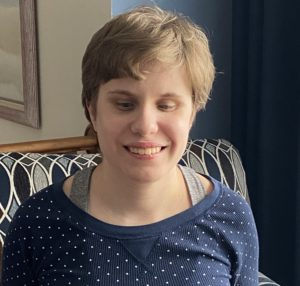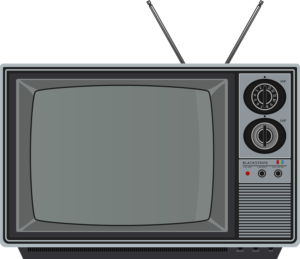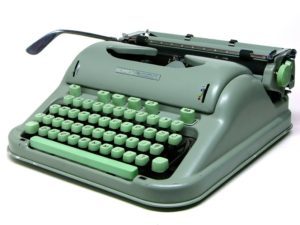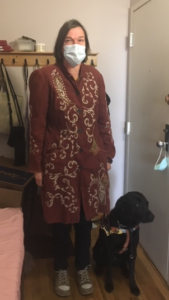Saturdays with Seniors: Hugh Brodkey’s Virtual Life
May 9, 2020 • 5 Comments • Posted in careers/jobs for people who are blind, guest blog, memoir writing, teaching memoir, travel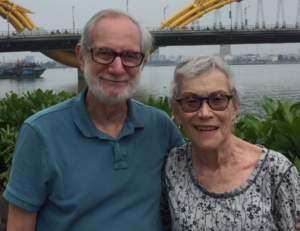
Hugh and Bobbe while on vacation in Vietnam.
Think people “of a certain age” are not keeping up with current technology? Think again. For weeks now, two of the memoir classes I lead have been running Zoom memoir classes on their own, and now two others — the ones I lead for The Village Chicago — are combining forces to explore if a Zoom class might work for them, too. Octogenarian Hugh Brodkey is the ambassador of that Village Chicago class, and this piece he read out loud for their first Zoom meeting was so refreshing I asked if I could share it with you Safe & Sound blog readers.
by Hugh Brodkey
Most dictionaries show two definitions for the word VIRTUAL:
- Almost or nearly as described, but not according to the strict definition (e.g. “he was virtually on time”)
- In computing: not physically existing as such but made by software to appear to exist
I’m staying at home in a virtual world. Bobbe and I are living in our same apartment. Everything is in its regular place. But, periodically, I catch myself thinking, “Is this real?”
Unless I make a concerted effort, I’m not out of my pajamas before noon. We go to bed later. Meals are at irregular hours. We’re watching more television.
Wait. “Television.” That literally means “vision brought to you by electronic means.” Virtual vision, not real vision!
We arrange to take a walk around the neighborhood each day to get some exercise and fresh air, but first we have to put on our face masks. The face masks block the possibility of actually getting fresh air! We avoid walking close to others. When we see friends, we wave and smile. But no-one can see the smile behind the mask. We’re virtually communicating, not really communicating.
On the other hand, most of our kids and grandkids are in California where, in normal times, we visit three or, at most, four times a year. Now, every Friday night we are all together on Zoom! We can see each other. We can see, weekly, how each great-grandchild is growing and changing. We can even see our grandson and his wife, who are in Brazil!! It’s altogether a very satisfying virtual experience.
For years, Bobbe and I have been singing in a choral group that meets once a week. Now, the group is meeting online three times a week. And once a week we also get together with our Chorus friends for a virtual chat on Zoom. My once-a-month Film Discussion Group Lunch now meets online twice a month, all of us lunching at home while viewing.
In a Zoom gathering, everyone is required to take turns speaking. In small online groups like our memoir group, one can sense the time when one person is done and another person may talk. We don’t talk over each other. But if the group were larger or more unruly, a moderator could be authorized to mute and unmute speakers. The technology actually gives us muting power we don’t have in person!
Don’t get me wrong. I know the edict to stay at home has undermined the economy. The shutdown has hit many of my friends and family…young and old. The young can’t get to their jobs. The old are seeing their investments suffer. But I do have one relative who invested years ago in Zoom. He’s virtually the only person I know who is smiling all the time!
So while staying at home, I find myself in contact with people, some more frequently than before and others less frequently.
But VIRTUALLY, my life is the same.
